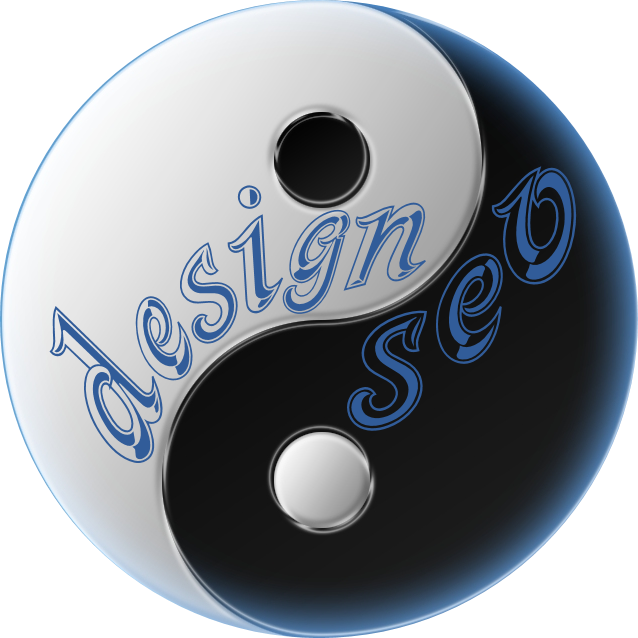
THE SEO CHECKLIST
The Search Engine Optimization Checklist compiled here is incomplete and ever changing. Last Updated: June 2011.
On Site SEO Checklist
#1. Use appropriate keywords. When in doubt check Google Ad Words or Google Trends.
#2. Use the keyword in the domain name.
#3. Use the keyword in the URL.
#4. Use hyphens or underscores to separate words in the URL or domain name to avoid confusion.
#5. Use the keywords in the title, up to 60 characters, no special characters.
#6. Use the keywords in meta tags.
#7. Keywords should be in the page content. Avoid going over 5% of the total words.
#8. Individual keywords should be 2% of the content or less.
#9. Use keywords in header text (H1, H2, H3).
#10. Use bold or italic on specific sets of keywords. ie. Names of movies, books, celebrities, etc.
#11. Bold links are best.
#12. Keyword proximity should be adjacent when possible.
#13. Use a variety of keyword orders to match specific phrase orders.
#14. The higher up the keyword is on the page the better, especially bolded or in a Header.
#15. Use keywords in ALT text for images.
#16. Use descriptive ALT text for all images when possible.
#17. Use TITLE text for important images.
#18. Use descriptive links / keywords in links.
#19. Internal links should contain appropriate keywords.
#20. Use hyphens for filenames, up to 4 keywords.
#21. All internal links should work properly.
#22. Use internal NAME tags for glossary items or minor side topics.
#23. Website should be organized in a 2-4 tier system. No page should be deeper than 4 clicks to get there.
#24. External links should go to quality sites which are well maintained.
#25. External links should contain appropriate keywords.
#26. External links to government or educational websites are best. .gov, .edu, .org are all good.
#27. Avoid having too many external links. Less than 100 is best, for the whole website. There are exceptions to this rule.
#28. Avoid "link churning" (rotating links of advertisers).
#29. Skip link exchanges. Complete waste of time and actually bad for your SEO.
#30. Periodically check external links to make sure they are still valid.
#31. Smaller files is preferred. Under 40 kb. Avoid going over 100 kb if possible.
#32. Update website content regularly.
#33. Add new website content regularly.
#34. Don't change too much content in a hurry. Keep a nice ratio of old to new.
#35. Update links periodically.
#36. Maintain a theme on the website. Avoid being too general or broad in subject matter.
#37. Use variants of keywords. ie. Design, designer, designing, etc.
#38. Avoid spelling mistakes.
#39. Avoid slang or derogatory terms.
#40. Use synonyms.
#41. If the website uses a lot of terms, make a glossary.
#42. Shorter URLs are better.
#43. Google likes medium sized websites. Too big can be problematic.
#44. The older the website the better.
#45. Add links to the newer pages on older pages on similar topics.
#46. New pages should link to older pages on similar topics.
#47. Avoid using text in graphics unless there is ALT text.
#48. Don't link to affiliate websites.
#49. Don't overuse keywords or H1 tags.
#50. Don't operate a link farm or link to a link farm, or any other site with a bad rep.
#51. Use a delayed redirect code when redirecting people from old obsolete pages.
#52. Redirecting pages should contain the link being sent to.
#53. Redirect pages should say "Sorry, page moved..."
#54. Avoid using "George Carlin's 7 Bad Words" or other vile language.
#55. Avoid using words that can hurt your website's reputation.
#56. Avoid excessive linking to your own sites.
#57. Create original content. Google tracks stolen content.
#58. Don't hyperlink other people's images.
#59. Avoid using the same keywords too many times in meta tags, alt text, body, etc. Keep it under 5%.
#60. Avoid too many unrelated keywords on a page. ie. Name dropping of celebrities on a topic that has nothing to do with them.
#61. Don't update content every hour. Even once per day is a tad much.
#62. Don't use dynamic websites with long URLs.
#63. Avoid using excessive javascript.
#64. NEVER use solely javascript for navigation.
#65. Don't hide links in "black on black", etc.
#66. Don't use Flash based websites. Avoid Flash if possible.
#67. If you must use Flash, make an alternative non Flash version.
#68. Avoid using frames.
#69. Don't exclude bots from exploring your website.
#70. Don't link to pages using just dots, symbols, numbers or single letters.
#71. Don't use invisible text.
#72. Don't use multiple versions of the same page.
#73. Avoid using faulty HTML or Javascript coding.
#74. Don't create websites which are deemed "hazardous" due to intrusive coding. ie. Viruses.
#75. Avoid using words or phrases associated with spamming.
Off Site SEO Checklist
#76. Use quality sites with high PageRank.
#77. Use sites which are "on topic" or similar in topic.
#78. Use multiple sites (different IPs are preferable) to backlink to your site.
#79. Use sites which are very on topic, despite lower PageRanks.
#80. Don't link from too many sites all at once. Use a gradual process, especially for new websites.
#81. Use keywords in link anchor text.
#82. Use older websites.
#83. Don't change the link anchor text unless there is something wrong with it.
#84. Use popular websites, even if their PageRank is lower.
#85. Use websites with very few links. Bigger piece of the pie.
#86. Place links higher up on the website.
#87. Bold links or Header links.
#88. Use websites which have good keyword density (usually under 5%).
#89. Use websites which have the keywords in the title.
#90. Use websites with keywords in the domain name.
#91. Use websites with keywords in the URL.
#92. Use links from websites which are "experts", government or universities.
#93. Stay close to the theme of your website.
#94. Avoid using links from an image map.
#95. Avoid using links from javascript, bots won't notice them.
#96. DMOZ categories are handy, but tricky to get into.
#97. Links from Wikipedia are nice too, but tricky to get.
#98. Search Engine directories help. ie. Yahoo Directory or LookSmart Directory.
#99. Use websites which are well designed with a good sitemap / layout.
#100. Use websites which are more Search Engine Friendly.
#101. Use websites which are small or medium sized.
#102. Use websites which have higher visitor time spent on site.
#103. Use websites which are frequently bookmarked, stumbled, etc.
#104. Use websites which are registered for the long haul. Google knows they are serious.
#105. Don't use websites which spam, link farm, etc.
#106. Don't buy fake traffic or use trickery to get extra traffic.
#107. Don't use temporary links. Always think long term.
#108. Don't use keywords which have their meanings change due to current events.
#109. Be careful buying links from websites. Progress slowly with it.
#110. Use Google owned websites. ie. Blogspot.
#111. Your server uptime is frequently down.
#112. Google Terms of Service Violation, depending on the nature of the violation it could cause your site to be outright banned.
#113. Copies of your website (ie. same template, same content, similar titles, cookie cutter reusage).
#114. NO links going to your site. Zilch. Very bad. None means Google removes your site from the index entirely.
#115. Don't spam your URL to people's email addresses, mailing lists, etc. Don't use "Black Hat" techniques.
SEO Checklist Notes
Some important tips to remember!
If your website's topic is unique, it will be easy to promote it because the keywords are more rare.
If your website's topic is similar to many others it will be highly competitive and very tricky to rank higher. Our recommendation is to think local and narrow the playing field.
In extremely competitive topics it may be more cost effective to go the SEM route with minimal SEO.
You can compensate from having fewer incoming links simply by having great content and good SEF website design.
Your SEO strategy should be "soft spoken". Less = More. Quality over Quantity.
Major sudden overhauls of your website can hurt its popularity dramatically. Change is best done slowly.
Many SEO experts have tricks up their sleeves and they are loath to discuss them with clients. Such "trade secrets" can vary between White Hat methods and Black Hat methods. White Hat = Doing things by the book (ie. The SEO Checklist), whereas Black Hat SEO techniques implies cheating and hoping they will get away with it.


